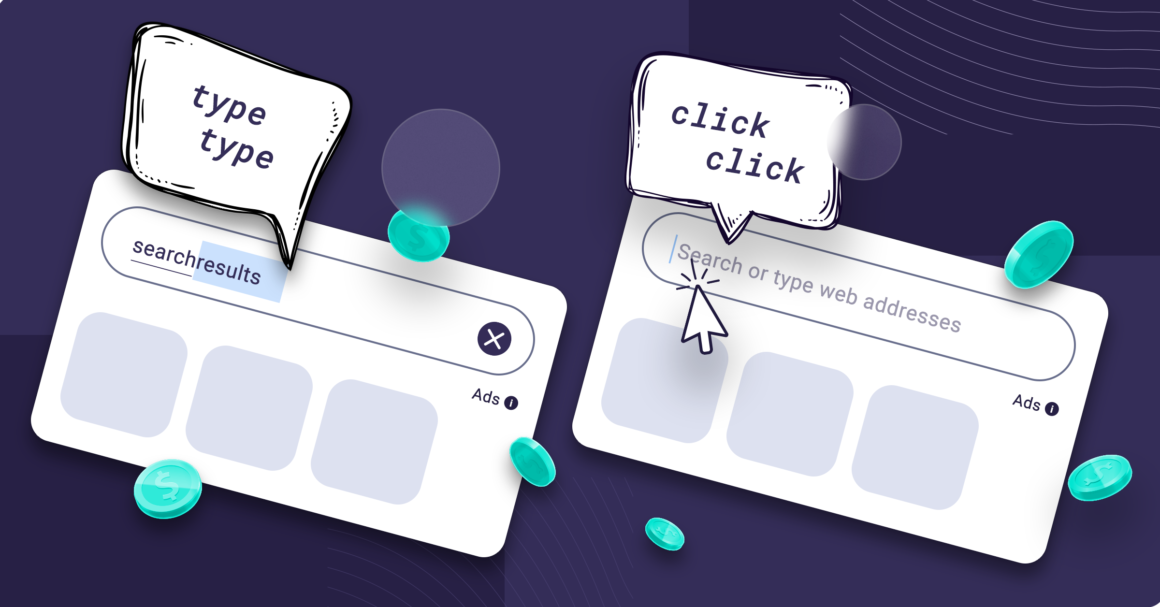Imagine shopping online without having to pay for things right away but also without having to use your credit card or applying for a loan…
A few years ago it would be considered by many a wishful thinking, but today it’s just as simple as ever.
The first BNPL platforms emerged in 2005, but only in the last few years have they become quite important for the e-commerce industry. Naturally, where’s demand, the supply follows, hence top brands decided to quickly follow the new buying model and, of course, capitalize on it.
And those looking to capitalize on programmatic media buying can now benefit from the BNPL hype as well.
In this article, we’re taking a closer look at how brand-safe programmatic advertising solutions can help your business get more exposure with BNPL platforms… even if you’re not there.
BNPL 101. What are the Buy Now, Pay Later platforms?
In order to fully embrace the potential that is being offered by BNPL platforms, every marketer needs to understand the mechanisms behind it. These platforms are solutions that allow customers to make purchases without the need to pay for them right away at checkout. In fact, BNPL gives users the possibility to have their orders shipped right after the transaction and pay the money back to the platform in full or in accordance with installment plans.
Although the Buy Now Pay Later model of payment could resemble a standard bank loan format, it is not associated with it, nor a credit card balance. What needs to be widely understood, is that the best BNPL solutions are mostly free of interest, and offer the highest extent of Fintech-driven safety for all parties. No steps include a major financial institution or a bank. And in most cases, interests, too. In 2022, fintech solutions are much more welcome and will only keep on changing the retail industry as we know it today.
How can a brand benefit from BNPL advertising?
An insightful marketer should understand how to use the characteristics of the BNPL audience in order to elevate sales, and earnings, accordingly. The industry has already learned how to tame programmatic advertising possibilities, and use those to win specifically targeted ad impressions. With BNPL it has become possible to precisely find an already purchase-driven audience that does not require convincing to spend money. What it needs is a suggestion on where to do so, and shoppers will gladly accept accurate recommendations.
For example, NewProgrammatic allows advertisers to access the BNPL media buying model, offering advertising solutions that make this process intuitive and efficiently presenting users with subtle, but really helpful keyword-based ads even before their query is fully typed in.
Buy Now Pay Later advertising is not for BNPL transactions only
Although Buy Now Pay Later offers are core to the BNPL platforms’ operations, they are not a necessity for a brand offered there. This should be remembered by advertisers and brands – a company does not need to have a Buy Now, Pay Later system implemented in order to be displayed on the effective BNPL traffic sources.
Like in the example we gave above, while creating a programmatic campaign, brands are able to use the precise BNPL targeting and reach the highly-converting users without exactly offering Buy Now Pay Later transactions. This way they are able to fully capitalize on audience preferences, have access to a purchase-driven user base and advertise in a brand-safe and respected environment.

Intent-based targeting boosts conversions
Marketers from all niches are highly aware of the fact that their brands’ performance will improve once their marketing efforts are correctly targeted. And although the traditional, demographic-based marketing approach has been a go-to strategy for a long time, it has been proven to be less effective than finding the right, highly-converting audience based on their intent.
Identifying user behaviors online and offering the ads to the people who actually seek proposals in that matter has become a crucial part of modern ICP (Ideal Customer Profile) building. And with BNPL platforms it has become possible to get access to detailed profiles of people who are already looking for solutions offered by the marketer’s brand.
With that knowledge and proper programmatic campaign creation solutions, a brand is able to prioritize those purchase-driven BNPL platform users, elevating conversions, sales, and profits. In fact, a well intent targeted campaign may require a smaller budget to perform better than broader, RON-type advertising.
A higher Average Order Value
Klarna’s insights suggest that implementing BNPL could impressively increase the AOV (Average Order Value), too. For some brands, the increase of AOV could be as much as 33%. This is due to the fact that with Buy Now Pay Later’s prolonged payment period, a consumer is able to afford more products. It also elevates the sense of financial stability.
Reaching the customer at the perfect moment
Timing is a key feature of programmatic advertising, and the BNPL model allows brands to reach their target audience exactly at the moment they expect it to happen. This applies especially to the NewProgrammatic advertising solutions, as they directly answer users’ queries before they finish typing them.
As a result, marketers are able to find the best converting audience by simply reaching out to the people who are most likely to become customers as they are already purchase-oriented.
Brand visibility and becoming competitive
In order to be able to make sales, a brand needs to find a way to jostle with competitors for user engagement and attention. Increased brand visibility and tapping into your competitors’ niches are on every marketer’s agenda. And that can be easily achieved through advertising on BNPL platforms.
Brand familiarity has always been an important aspect of building a position both in local and international markets. If potential customers are aware of the brand’s existence and offer, it will be much more convenient for advertisers to present the results.
Various marketing and user-behavior studies utilizing eye-tracking technology found that internet users will more eagerly click on familiar brand names while conducting their searches. The extent to which such findings apply is quite impressive, as according to Secret Life of Search research, 82% of internet users choose familiar brands as their first-click option.
This leaves marketers of smaller, and less recognized brands with a hard nut to crack. On one hand, typical SERPs on common keywords become unavailable for them, as most often they cannot compete financially with the giants. On the other hand, building brand awareness becomes harder if users tend to focus on familiar names.
The solution could be, again, BNPL advertising, allowing brands to become visible by skipping the SERPs altogether.
It increases brand awareness and brings purchase-driven customers to the landing page. See, how NewProgrammatic could help your brand increase its reach.
User expectations for a BNPL provider
The popularity of BNPL solutions is not a coincidence, it’s a direct response to what the audience expects. This applies mostly to younger generations of consumers that are highly literate with technology and hence seek smooth user experience, tend to be very brand-oriented, and do not enjoy the thought of loans. Today’s users also value their privacy and appreciate a well-timed effort-saving suggestion. With that being said, companies that follow these trends will be able to effectively attract customers.
This enabled industry to forge a model that is beneficial for everybody. On one side, programmatic advertising on BNPL markets attracts the consumers who enjoy delayed payment opportunities, and will gladly take a suggestion as to what brands to focus on. On the other side, there are advertisers who now have access to a highly purchase-convinced brand-safe audience, which can elevate their campaign’s efficiency.
There is a structural shift going on in payments more broadly because of the changing behavior of the next generation. As the Millennials and Gen Z spend more, that will drive that spend to these more modern offerings.
Jason Orthman, Hyperion Asset Management (for Australian Financial Review).
Where are BNPL solutions most popular?
It’s safe to say that BNPL adoption is at its early stage in the USA and Europe, as Buy Now Pay Later transactions have not yet become the driving force in worldwide e-commerce. It only accounted for 1.6% of total e-commerce sales in the United States of America in 2020, but the projections suggest that it could reach 4.5% by 2024.
European markets are not homogenous in that matter, as Sweden, the UK, and Germany emerge as leaders in the BNPL e-commerce payments. This should not be surprising for the industry, as Sweden is actually home to BNPL. Klarna, the pioneer in Buy Now Pay Later services, has been founded in Stockholm. The region of Europe, just like the USA, opened up to the BNPL solutions, and reports from Q4 2021 only confirm that. According to the BNPL Survey, in Europe, the industry will expectedly grow by 54.7% in 2022.
In the breakdown of domestic e-commerce payments, right behind Scandinavian countries and Germany, are Australia and New Zealand. Once again, those are highly innovative regions in terms of Fintech and greatly developed countries in general. New Zealand and Australia together made up 20% of the global e-commerce market share in 2020.
Precise suggestions
There is a fine line between what could be perceived as intrusive advertising, and an anticipated query suggestion. Modern users expect accuracy and good timing, and providing exactly that is a way of gaining their trust.
To attract more consumers and conversions, the industry needs to focus on advertising in brand-safe conditions, where it is part of an established environment that a platform presents suggestions to its users. As those recommendations are part of a deal between a purchase-oriented audience and the BNPL solution provider, they are highly expected.
This is an effective synergy that leaves all the parties in the marketing equation satisfied. Thus, by neglecting BNPL traffic and conversions, marketers and brands repudiate trendy and highly rewarding solutions for market reach.
The reluctance toward debts
Having witnessed a financial crisis once every few years, Millennials and Gen Z representatives have developed a fear of financial instability connected with the unpredicted financial market behaviors. Younger audiences do not see loans as a solution to their needs. That is why financial liabilities with third-party companies, and not banks, are a much-appreciated opportunity for them.
According to American Psychological Association’s study, people between the ages of 18 and 34 are more scared of debt (34%) than of death (20%) and war (17%). Having been raised in relatively safe times, new customers perceive the financial trouble they witnessed watching their parents struggle with as a more perilous circumstance.
That is why more than half of Millennials (67%) do not have a credit card at all. These users need independence, but it does not change the fact that they still enjoy flexible payment options. The difference between them and their parents and grandparents is that Millennials and Gen Z require more transparency and security.
The modern way to do it is to use buy-now-pay-later. It’s consumer-friendly. It’s not unfair. It doesn’t have any fees. It’s really transparent. It’s often mobile and digitally available for online shopping.
David Sandström, Klarna’s Chief Marketing Officer (for Verdict.co).
Covid-struck e-commerce market
There is no doubt that Covid-19 has heavily changed the way consumers, brands, and marketers need to operate on the market. With people losing jobs, and brands seeking major savings, both sides of a previously well-cemented system needed to adjust to the new reality.
The first thing that most consumers did when the pandemic broke out, was to suspend all extra spending. In times of uncertainty, BNPL platforms provided exactly that – a possibility to save money while not being forced to postpone shopping.
The statistics show that perfectly. Adobe conducted e-commerce-focused research that highlighted how Buy Now Pay Later platforms grew 215% YoY in the first two months of 2021. Moreover, BNPL service providers have noticed that customers are placing orders 18% larger on average.
This directly benefits the brands, as by offering their products and services on BNPL platforms they are able to elevate sales, capitalizing on user behaviors. But advertisers should bear in mind that 65% of BNPL transactions include payments of less than $500.
Credit Karma’s 2021 research shows that as much as one-third of BNPL purchases (32% of those) are for $100 and less. Younger audiences, Millennials, and Gen Z, mostly use BNPL for more frequent, but less valuable acquisitions. Big-ticket item purchases worth $3,000 or more are more common among Gen X and Boomers(+). Respectively, 11% and 17% of these users have used BNPL solutions for purchases of $3,000 or more.
First-party data security
Another result of having younger generations create market trends is a major focus that has to be put on user privacy. Third-party data trading is not welcome anymore, as audiences are highly alert to what happens with their information. This transmits to how modern programmatic advertising needs to be conducted, and this is where NewProgrammatic and BNPL platforms come in handy.
This combination offers safe, yet precise penetration of the highest-tier audience without any need for third-party data processing. Users consciously agree to Buy Now Pay Later platforms for processing their data so that ads are precise and well-tailored.
The BNPL platforms do not inform advertisers about user profiles, and therefore protect the audience’s data. NewProgrammatic ads are keyword-based. This means that in a split second when the user is typing their query, a precise ad is being matched to them.
For more information about Cookieless advertising for a cookieless world, we recommend reading NewProgrammatic article on the topic.
What major BNPL brands should advertisers pay attention to?
The BNPL segment of e-commerce has been constantly growing due to user preferences, market changes, and an increased interest in safer, cookieless solutions. That is how the industry has been able to attract new business partners and widen its user base, offering even more traffic to the advertisers.
Due to the fact that volumes and conversions are crucial in process of advertising, all brands should get well accustomed to the most popular BNPL solutions. Mainstream companies offer, in fact, the widest possibilities, and really valuable traffic.
The below set of most popular brands in the BNPL industry is a great starting point for all advertisers who seek to explore these possibilities.
- Klarna
- Zip (previously QuadPay)
- Afterpay
- Affirm
- Laybuy
- PayPal
Conclusions
With the pace of development in the BNPL niche and the new possibilities that this segment offers to the advertisers, there is no reason why any marketing specialist should ignore BNPL traffic. And the future seems to be looking really bright for these fintech services, as more customers, especially from younger audiences, trust leading BNPL solutions.
More than certainly, brands in 2022 should not be forgetting about entering the BNPL advertising for all the opportunities:
- Advertising on a cookieless basis without any third-party data nonconsensual processing
- Becoming fully compliant with modern user preferences for online shopping
- Offering well-timed and contextually relevant advertising
- Reaching purchase-oriented audience
- Effective competition against other brands
- Increasing brand awareness and conversions at once
- Embracing the brand-safe advertising
Does your brand want to elevate the sales and increase its visibility?
Check out the NewProgrammatic demo!




